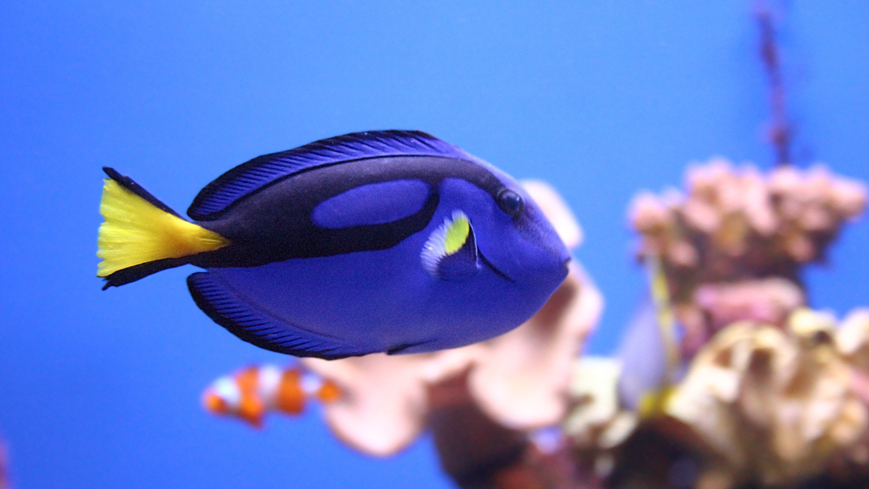The palette surgeonfish shoots through tropical Indo-Pacific waters like a bright blue flash. If its activity attracts the attention of a predator, it can respond by drawing its secret weapon.
A scalpel – or at least that is what it looks like. A bony defensive spine is attached to each side of the caudal fin where it joins the body. If agitated, theParacanthurus hepatus can flick this miniature ‘scalpel’ open like a penknife. These scalpels also lead to the word ‘surgeon’ in this marine inhabitant’s name.
With their blades and the poison glands hidden in the tips of their fins, palette surgeonfish are not only able to ward off hunters, but are also creatures that people need to be careful of. Despite these razor-sharp defence mechanisms, palette surgeonfish are still a favourite food for not only sharks but also moray eels, tuna and tiger groupers.
Always on the hunt for plankton
Humans, on the other hand, particularly delight in the palette surgeonfish’s magnificent colours, which make it easy to recognise: the almost neon blue and black patterns on its sides and the bright yellow wedge on its caudal fins. Its flat shape and oval body hint at the palette surgeonfish’s favourite pastime: it loves swimming around and is constantly on the move. It is therefore referred to as an endurance swimmer.
Adult palette surgeonfish particularly like to ‘take a stroll’ along the edges of coral reefs, constantly on the look out for small zooplankton. Here and there, they also nibble on algae or coral. Their need for space and their size of up to 31 centimetres means that palette surgeonfish are not necessarily ideal aquarium fish. They should therefore only be kept by experts.
A colourful transformation
It has not yet been possible to successfully breed palette surgeonfish. This means that all fish in marine aquariums have been caught in the wild. Palette surgeonfish do not lay their eggs in a single place (like clownfish for example). Instead, they release the eggs and sperm into the water while swimming, where they fertilise each other. The eggs and the resultant almost transparent fish larvae float freely through the sea as part of the plankton for about 40 days before finally settling on the coral reef and gradually developing into juvenile fish. During this stage, the little marine creatures not only grow but also change their colour – until they are no longer transparent but can instead shoot through the reef like blue shadows.

